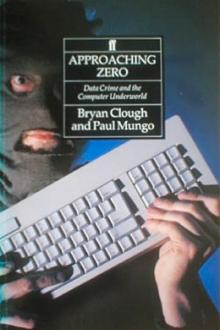The Kidnap Years: David Stout (best inspirational books TXT) 📖

- Author: David Stout
Book online «The Kidnap Years: David Stout (best inspirational books TXT) 📖». Author David Stout
But the vigilance paid off. On Friday, January 14, 1938, a man walked up to a window to bet on a horse and handed over money from the ransom. Whether by luck or alertness or both, agents spotted the bills at once, and the would-be bettor was soon on his way to the Los Angeles FBI office—but not before some $5,600 in ransom money was found on his person, in his hotel room, and in his car.
The man gave his name as “Peter Ander” and said he had obtained the money from bank robbers at a large reduction. In other words, he didn’t mind admitting that he had laundered the money. He denied any part in the kidnapping of Charles Ross. Then, questioned at length by Hoover, he changed his story.
He said his real name was John Henry Seadlund. He was twenty-seven years old and had once been a logger. He had shot Ross to death, along with his own partner, in a dispute over how to divide the ransom. He signed a twenty-eight-page confession laying out the details and agreed to show agents where the bodies were.
Flown to Minnesota, Seadlund guided agents across snow-covered fields. Near an abandoned stretch of train track, he pointed to a mound beneath the snow. There, agents found a typewriter case with some $32,000 in ransom money inside.
Horses and sleds were hired for the rest of the search. There were no major highways in the region at the time, and the existing roads were buried under snow. They came to the first hideout, near Emily, Minnesota, where Ross had been kept in a wood-lined dugout for almost two weeks after he was taken. Then Seadlund guided the searchers into Wisconsin, near the little community of Spooner. Agents brushed away snow and brush where Seadlund indicated, thus exposing a coffin-sized hole. Inside lay the bodies of Seadlund’s partner, James Atwood Gray, and the victim, Charles Ross.
Seadlund admitted killing Ross and Gray on October 10, or two days after the ransom was delivered.
Back in Chicago, Seadlund pleaded guilty in Federal District Court on February 28, 1938, to violating the Federal Kidnapping Statute—the Lindbergh Law. A few weeks later, he was sentenced to the electric chair. He shouted a vulgarity and was led out of the courtroom to begin his stay on death row.
The body of Charles Ross was transported to Chicago for private services.
John Henry Seadlund was born in Wisconsin and grew up in that state and in Minnesota, where his father worked in the iron mines. He liked engines and motors more than textbooks and preferred hunting in the woods to sitting in the classroom.
His father died when Seadlund was thirteen. Seadlund also worked in the mines until, one by one, they closed during the Depression. He worked as a logger, at a service station, and as a grocery store deliveryman.
If there was a moment that changed his life, it may have been a chance meeting with a gangster named Tommy Carroll, an associate of John Dillinger, when Seadlund was an adolescent. The encounter took place while Seadlund was hunting in a patch of woods where Carroll was hiding out. They struck up a friendship of sorts, and Carroll persuaded Seadlund to bring him some food.
The FBI file on the meeting between the young Seadlund and Carroll is sparse, but it seems to have convinced Seadlund that a life on the wrong side of the law could be more exciting than a dreary existence on the straight and narrow.*
He began his criminal career by pulling off store robberies and stealing cars while he was still in his teen years. Soon, he graduated to bank heists, committing several in Wisconsin. Then he traveled to Spokane, Washington, where he did honest work for a while. But he grew homesick for the Upper Midwest and returned there, intending to rob more banks in Wisconsin and Minnesota.
On his trip eastward, Seadlund picked up James Atwood Gray, who was hitchhiking and who was similarly eager to commit crimes. A few weeks before kidnapping Charles Ross, the pair kidnapped the wife of a café owner in Lake Geneva, Wisconsin. The enterprise didn’t go well. The woman was released after two days as Seadlund and Gray were unable to persuade her husband to pay.
Seadlund traveled up and down the Eastern Seaboard and across the country in the weeks after the kidnapping of Charles Ross. Although he seems to have been missing some connections in his emotional circuitry, it was clear that Seadlund was not devoid of feelings. On October 20, 1937, while he was in Denver, he bought a small dog for companionship. Six weeks after the kidnapping, he was in Spokane, where he asked an eighteen-year-old to marry him after only their second date. She turned him down. “There was something about him—I don’t know what—that gave me a queer feeling,” she said later.186
After Seadlund was captured, the gossipmonger Walter Winchell reported on his radio show that Seadlund had once considered kidnapping the baseball stars Joe DiMaggio of the New York Yankees and Dizzy Dean of the St. Louis Cardinals. Hoover refused to comment on Winchell’s report, at least publicly. Odds are that Hoover fed Winchell the “scoop” in the first place.
A few minutes past midnight on July 14, 1938, Seadlund walked unassisted into the death chamber at the Cook County Jail in Chicago and sat down in the electric chair, sitting impassively as the straps were adjusted. The current flowed, and he





Comments (0)